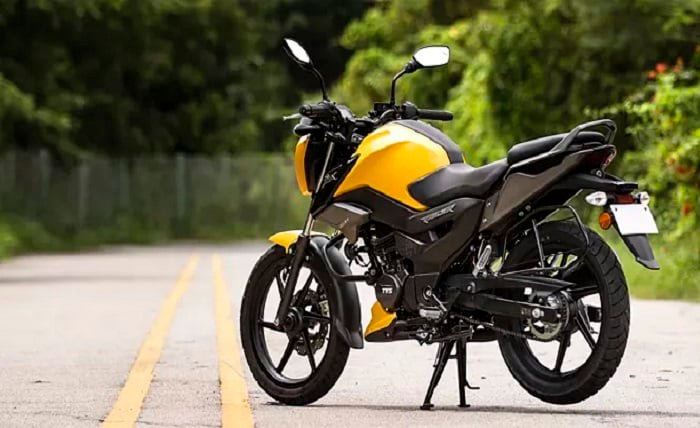Maximizing Rider Bike Mileage: Tips, Techniques, and Insights

Introduction
Achieving optimal “rider bike mileage” is crucial for many bike enthusiasts and everyday riders. Higher mileage means more cost savings, a smaller environmental footprint, and fewer trips to the gas station. This comprehensive guide covers everything from maintenance tips to riding techniques, ensuring you get the best mileage possible from your bike.
The Importance of Rider Bike Mileage
“Rider bike mileage” refers to the distance a bike can travel on a specific amount of fuel. Riders prioritize high mileage because it affects both their wallets and the environment. Whether you’re commuting, traveling long distances, or just enjoying a ride, understanding how mileage works is the first step toward improving it. Knowing your bike’s mileage can help you budget fuel costs better and adopt riding habits that benefit both you and your bike.
Factors That Affect Rider Bike Mileage
Various factors influence “rider bike mileage,” from external conditions like terrain and weather to internal factors like engine health. Understanding these elements can help you recognize why your mileage might fluctuate. Riding style, road conditions, fuel quality, and tire condition all play significant roles. By identifying these factors, you can work on areas that need improvement to ensure more consistent and higher mileage for your bike.
Maintenance Tips for Improved Rider Bike Mileage
Regular maintenance is one of the most important ways to boost “rider bike mileage.” Frequent oil changes, timely replacement of spark plugs, and air filter cleaning are essential. Checking tire pressure and chain lubrication can also improve mileage significantly. A well-maintained bike runs more efficiently, and keeping parts in good condition ensures your bike performs at its best, translating to better fuel efficiency.
Choosing the Right Fuel for Maximum Rider Bike Mileage
Fuel quality is often overlooked, but it plays a critical role in determining “rider bike mileage.” Choosing high-quality, clean fuel minimizes residue buildup in the engine, leading to smoother combustion and better mileage. Always refuel at trusted stations, and consider using fuel additives to keep the fuel system clean, which helps maintain optimal mileage.
Adjusting Riding Style to Enhance Rider Bike Mileage
Your riding style has a direct impact on “rider bike mileage.” Sudden acceleration, abrupt braking, and high-speed riding consume more fuel. Adopting a smooth riding style—gradually accelerating and maintaining a steady pace—can drastically improve your mileage. By avoiding aggressive maneuvers, you reduce the stress on your engine, ultimately conserving fuel.
Lightweight Modifications to Improve Rider Bike Mileage
Carrying excess weight affects “rider bike mileage.” Extra load increases fuel consumption as the engine works harder to move the bike. Removing unnecessary items and choosing lightweight accessories are effective ways to improve mileage. Additionally, some riders opt for streamlined modifications to reduce wind resistance, which can also positively impact mileage.
Using Technology to Track and Improve Rider Bike Mileage
Modern bikes often come equipped with digital displays and apps that provide “rider bike mileage” insights in real-time. Some advanced systems track your fuel consumption and offer tips to enhance mileage. Using these tools can help you monitor your riding habits and adjust as needed to maintain or improve your bike’s fuel efficiency.
Fuel-Efficient Bikes: Making the Right Choice for High Rider Bike Mileage
If maximizing “rider bike mileage” is a priority, choosing a fuel-efficient bike is key. Lightweight models with smaller engines typically offer better mileage. Research fuel-efficient bikes and compare specifications, mileage claims, and customer reviews to make an informed choice. Investing in a bike known for its mileage can be a practical decision for long-term savings.
Ideal Tire Pressure and Its Impact on Rider Bike Mileage
Proper tire pressure is essential for maintaining optimal “rider bike mileage.” Underinflated tires increase rolling resistance, which forces the engine to work harder, reducing mileage. Check your tire pressure regularly and adjust it as per the manufacturer’s guidelines. Keeping tires properly inflated not only enhances fuel efficiency but also ensures a safer and more comfortable ride.
Avoiding Common Mistakes that Lower Rider Bike Mileage
Many riders unintentionally lower their “rider bike mileage” by making common mistakes. Over-revving, neglecting regular servicing, and idling for long periods are some habits that can reduce mileage. Recognizing and avoiding these mistakes can prevent fuel wastage and keep your bike performing optimally, allowing you to achieve better mileage on every ride.
Conclusion
Optimizing “rider bike mileage” requires a combination of good maintenance practices, mindful riding habits, and informed choices about fuel and equipment. By following these guidelines, you can enjoy a more efficient, cost-effective, and environmentally friendly ride. Whether you’re a seasoned biker or a newcomer, these tips will help you make the most of your fuel and experience a smoother, longer journey on your bike.
FAQs
- How can I check my rider bike mileage accurately?
- You can calculate it by measuring the distance traveled on a full tank and dividing it by the fuel consumed.
- Does tire pressure affect rider bike mileage?
- Yes, underinflated tires increase rolling resistance, which decreases mileage.
- Can using premium fuel improve my rider bike mileage?
- Not necessarily. Use the fuel grade recommended by your manufacturer for optimal performance.
- How often should I service my bike to maintain rider bike mileage?
- Regular servicing every 3,000-5,000 miles, or as recommended, can help maintain good mileage.
- What are the most fuel-efficient bike models for high rider bike mileage?
- Bikes with smaller engines and lightweight frames tend to offer better mileage; research specific models for details.




